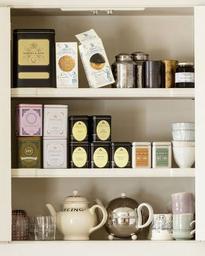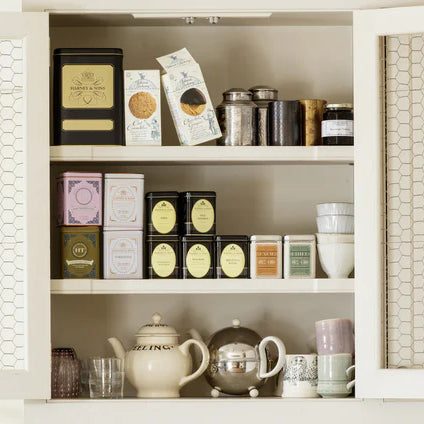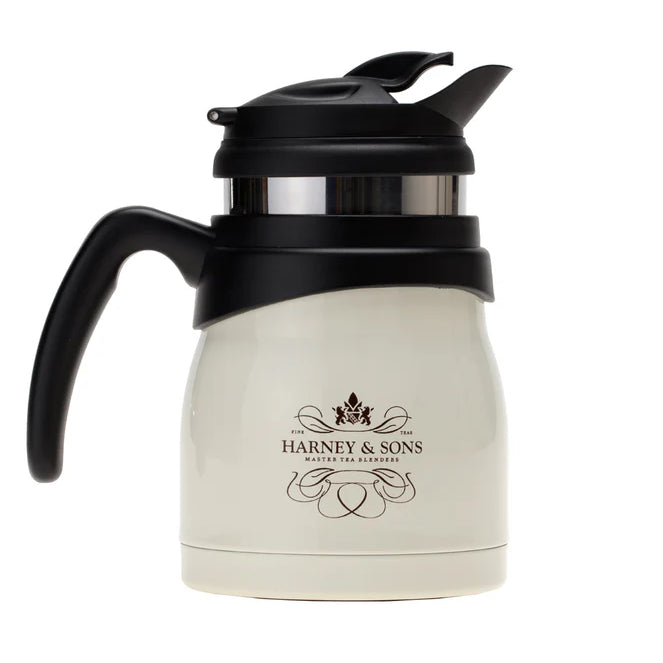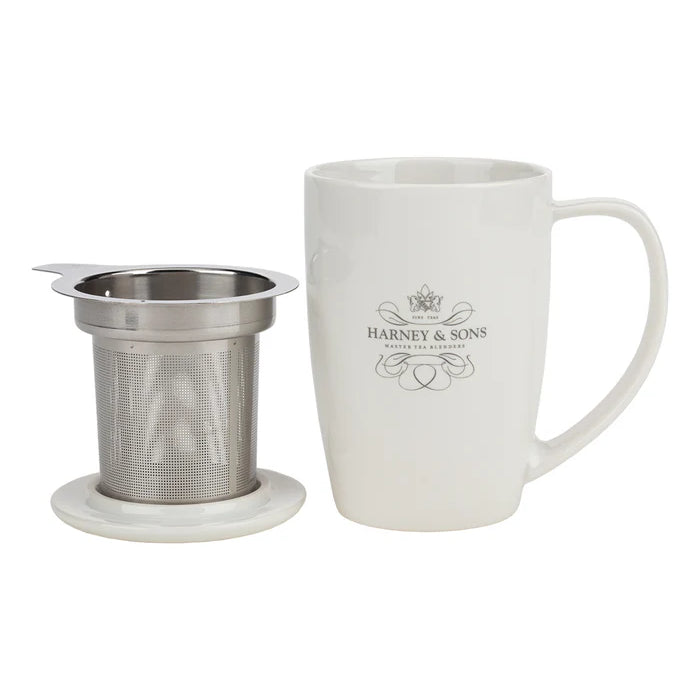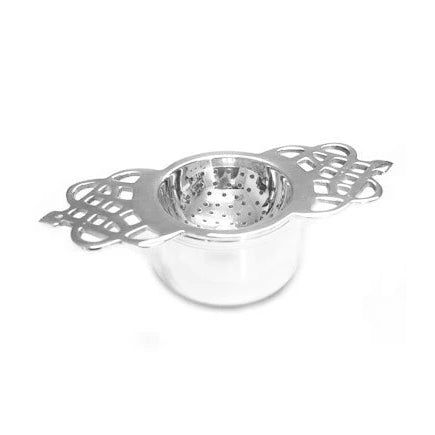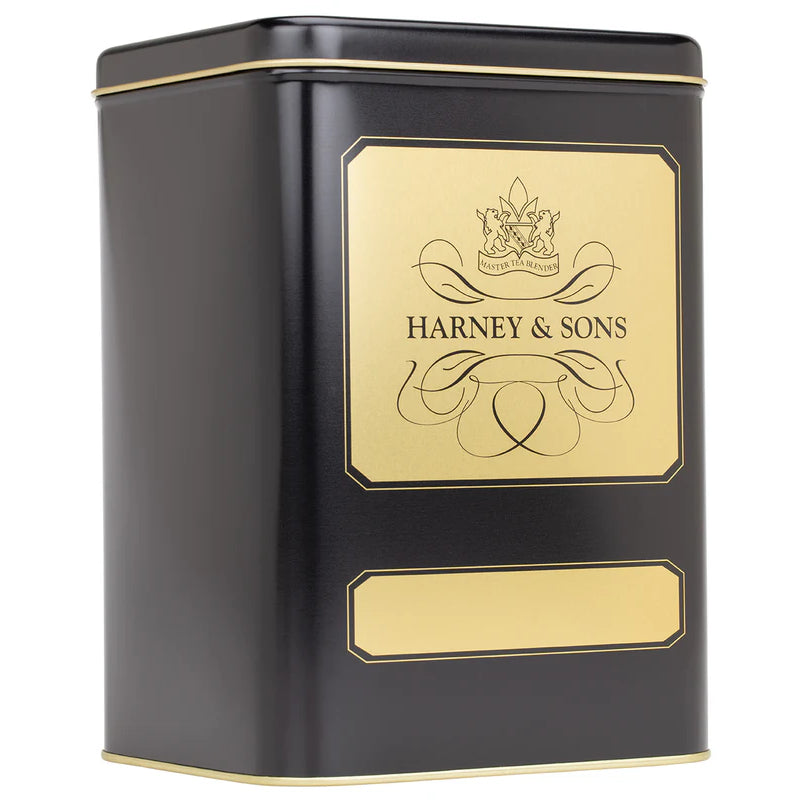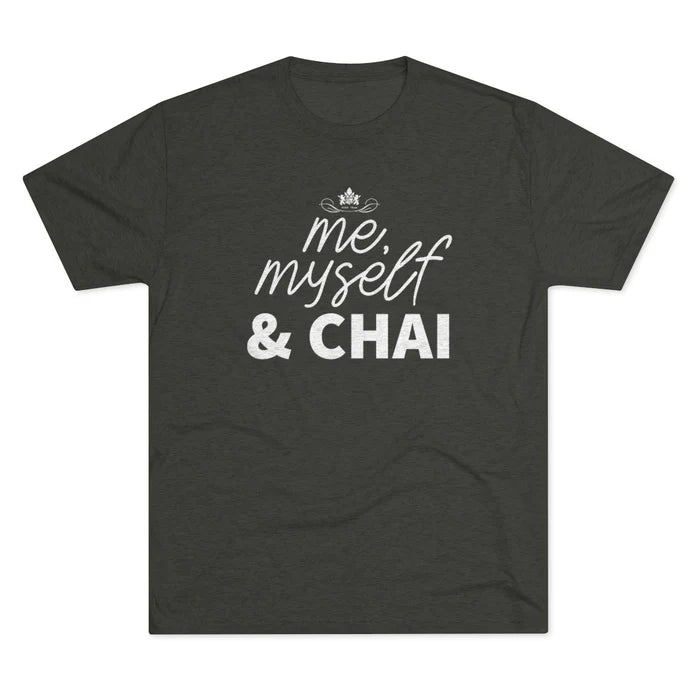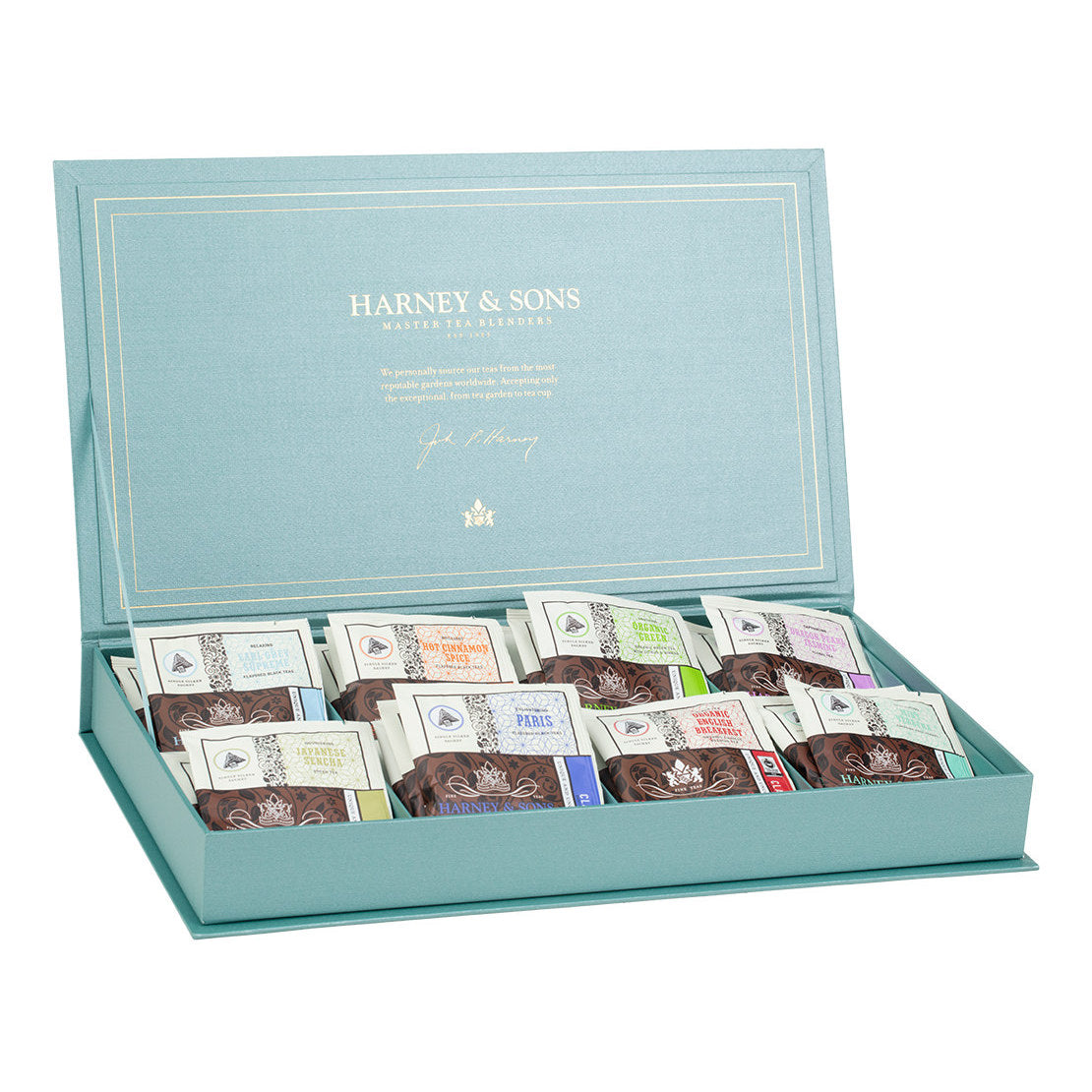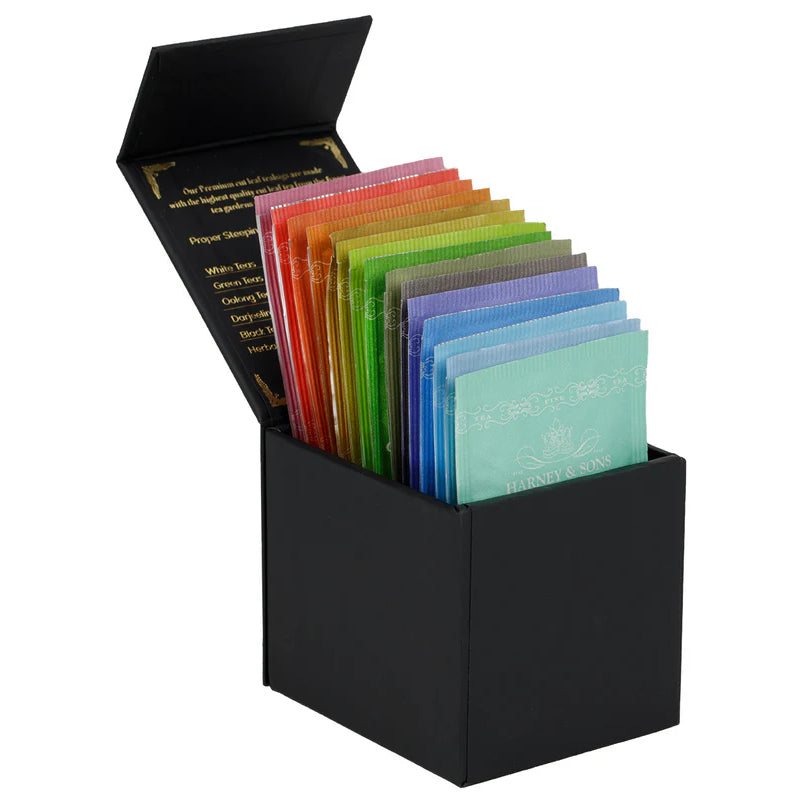
If you’re sitting there thinking, “White tea? Tea’s not white, everyone knows it’s brown,” well, my friend, you have been missing out. Let’s introduce you to this amazing beverage, among the rarest teas in the world… a rariTEA, if you will!
While white tea comes from the Camellia sinensis plant just like black, green and oolong teas, that is where the similarities end—something like cousins at a family reunion: related, but otherwise not that much in common. White tea is primarily made from the young tea bud, plucked just before the leaf opens on the stem. Where green and black teas draw their more robust qualities from mature leaves, white teas consist of incipient leaves called “buds,” or “tips.” If left unplucked, within a week to ten days this bud would unfurl into a beautiful leaf. Consisting almost exclusively of only buds (a very few white teas are not bud-only), white teas are the simplest yet also among the most complex. Their sizable tips are a product of centuries of selective propagation. Buds play an important role in many green and black teas; harvested along with mature leaves, they give those teas refined sweetness and a softer body.
White teas, therefore, provide a chance to sample an important component tea, barely adulterated. Barely processed, light and refined, they present one of the purest expressions of the tea plant. While white tea isn’t truly white—the tea buds (which do not have fully mature chlorophyll) grow to a bright green color, fade to silver and brew to a pale yellow. The liquor yields not only the lightest color, but also the leanest body of all teas, a delicate juxtaposition to the creaminess of oolongs and the brisk pucker of British Legacy Teas. Their aromas and flavors are wonderfully subtle, requiring careful attention. Look for gentle sweet notes ranging from honeysuckle to light maple sap, citrus fruit flavors like orange and lemon, and wisps of floral aromas, evoking jasmine and rose. The delicacy of white tea leaves allows wonderfully subtle flavors to flourish in your freshly brewed cup.
Fun white tea facts
To help the buds mature into leaves, the plants furnish them with an extra shot of glucose, a sugar boost that makes the buds much sweeter than a mature leaf. To protect the buds from sun and bugs, the plants also provide them with a downy soft coating of tiny hairs called “tricomes.” These tricomes give the buds a soft fuzziness like pussy willows and can sometimes coat dry tea leaves in a fine pale dust. The downy fur helps limit water loss and may also deter hungry bugs from gaining access to the nutrients within. To further deter predators, buds also contain extra caffeine and polyphenols, a natural sunblock and bug repellent. White teas are therefore slightly more caffeinated than green and black teas. More on that later.
Where Does White Tea Come From?
Our tea-buying trips to China would not be complete without a stop to visit our friends at the city of Fuding, the capital of white tea. Fuding is located in the Fujian province, where the very best white teas come from. White teas have become so popular, however, that tea makers have begun making them all over the world, increasingly from Sri Lanka in South Asia and most recently in Kenya. There has been a remarkable transformation of Fuding because of the increased demand for white tea. The Chinese have taken a fancy to aged white tea, and that has created prosperity. Tea was everywhere on our last visit, and even professional tea merchants like us learned a thing or two more about white tea than we knew before we arrived.
How Is White Tea Made?
As we mentioned earlier, the unopened white tea buds are hand-plucked and “withered” or “air-dried.” During the drying, they turn from light green to iridescent silver as the immature chlorophyll within them dies off. The process of making white tea is quite different than black, green and oolong teas that have more complex processes like steaming, rolling or oxidizing. White tea is the least processed of all the teas.
How Much Caffeine Is in White Tea?
Don’t be fooled by its light color into thinking that white tea is lower in caffeine than, say, a black tea. Contrary to popular belief, many white teas can actually have higher levels of caffeine than black teas because they contain more tips or buds. Very “tippy” teas, or teas that have a high tips-to-leaves ratio, usually have higher levels of caffeine than teas that do not contain many tips. (That’s what we call a “caffeine tip!”) Also, the caffeine levels in white tea buds are slightly higher than that of green or black tea, which helps protect the plant from predators during early growth stages. There are ways to mitigate the amount of caffeine in your cup of white tea, however, during the brewing process.

*While these caffeine levels hold true generally, caffeine in tea varies from plant to plant and within tea types.
How to Brew White Tea
White teas like Yin Zhen, Bai Mei, Ceylon Silver Tips and Bai Mu Dan (see more on these teas below) are all so delicate, they brew best at a low temperature and for a short period: around 175 degrees Fahrenheit and for only two to three minutes. This helps protect flavor and aroma. The water changes color so imperceptibly with white teas; you’ll find helpful information on what color you can expect the teas to be on our individual tea pages (see our Winter White Earl Grey for an example). For more flavor, add more tea, not time.
To keep caffeine levels low, consider the following:
- Brew your tea properly with the correct amount of water, temperature and brew time.
- Use loose leaf tea. Teabags tend to contain smaller, cut leaves resulting in higher caffeine extraction.
- Try a white tea blend. Blends tend to contain ingredients like hibiscus, which is naturally caffeine free.

How Should I Store My White Tea?
Storing white tea is no different than storing all types of tea. Our tea tins are airtight, keeping out things tea doesn’t like such as moisture, oxygen, absorbable odors and light. We’ve got all kinds of helpful tips for storing tea and keeping it fresh in our Does Tea Go Stale? blog post. Some white teas can be quite an investment, so make sure you follow our tips for proper storage.
White Tea Health Benefits
Young tea buds, like the ones used to make white tea, naturally contain a greater proportion of polyphenols. These polyphenols help protect the young leaves from insects and provide higher levels of antioxidants. Antioxidants are our bodies' friends, working to help neutralize the negative effects of free radicals and thereby boosting our overall health. Here at Harney, we know that one of the benefits of white tea or any delicious cup of tea is the natural slowing down of life in the ritual of brewing a pot of tea. Most individuals find the process to be calming and relaxing, from heating the pot to sitting down to enjoy a cup for a moment to yourself or with a friend. Life doesn’t really get much better than that.
So, Harney: What Are the Best White Teas?
Wow, it’s really hard to narrow down which white teas are the best! Before we get to some of the classic white teas known and enjoyed around the globe, we’ll take a sec here to give a shout-out to our own Harney white tea blends, like White Vanilla Grapefruit, Wedding Tea, Berry Young and Venetian Tiramisu. Created uniquely by us, these white teas have added flavors that give them their own distinct flavor. Check out all the white teas available for your enjoyment on our White Tea collection page.
Some of the best-known white teas in the world:
Yin Zhen
Yin Shen is widely considered the best white tea in the world. Although it is expensive, it merits its price. It comes from a beautiful corner of Fujian province whose hills and valleys are carpeted with gorgeous tea gardens. The best Yin Zhen comes from the coastal counties of Fuding and neighboring Zheng He, whose mountains are steep but not high. Yin Zhen’s silver tips grow on the Da Bai (“big white”) tea tree, whose name aptly describes the plant’s large buds. The Da Bai plant forms fat buds, thickly coated with down. The plants need time to create these big buds, so the Yin Zhen harvest starts later than in adjacent green tea areas. The buds are painstakingly plucked by hand. In the spring, in the mornings after the dew has dried, the hills are dotted with harvesters. Typical of the variation within many Chinese teas, every Yin Zhen maker makes this tea a little differently.
Some tea makers dry the buds on tarps in the sun, others dry them on wooden slats in the shade, and still others lay them out on racks in temperature-controlled rooms. A few Yin Zhen makers lightly fire the teas after drying them, giving their teas the faint heat flavors of lightly toasted white bread. Yin Zhen is just as charming for the way it brews. It is worth steeping Yin Zhen in a glass vessel to watch this. Instead of pouring the water over the buds, scatter the buds over the surface of the water. Sometimes the buds will fall right to the bottom, but in the best of times they will float a few moments on the surface, then tip their noses to hang vertically in the water. There they will sway gently, before falling to the bottom of the glass. As they unleash a pale green liquor, the buds themselves will slowly turn a dark sage green.
Ceylon Silver Tips
Ceylon Silver Tips is one of the few exquisite white teas now available outside China. Where Chinese white teas have a faint vegetal undertone, Ceylon Silver Tips is nearly all fruit, flowers and sweetness. As its name suggests, this tea comes from Sri Lanka, formerly known as Ceylon. An island south of India, Sri Lanka produces many wonderful black teas. In the tiny world of white tea production, Sri Lanka has more recently become the second largest white tea producer after China. Ceylon Silver Tips has appeared only within the last few decades. It comes from an area about halfway up the Central Highlands, the high mountain range that divides the tropical island. Unlike the large operations in Fujian province that produce Bai Mu Dan, Ceylon white teas come from small gardens with wonderful names like Oodoowerre and Meddecombra. Only some of the plants yield the necessarily large tip. As a result, tea is produced in such small quantities that buying more than a dozen boxes requires significant haggling. The tea’s subtle citrus fruit and spice flavors make the effort worthwhile.
Bai Mu Dan
Among the most popular and easy to find of the white teas, Bai Mu Dan also bridges the gap between white teas and green with its mixture of tips and whole tea leaves and resulting mild vegetal flavors. A relative of Yin Zhen, Bai Mu Dan comes from the same cultivar. Unlike any other white tea in this chapter, Bai Mu Dan also includes some mature tea leaves. The finest have the highest ratio of buds to leaves. Lower-grade Bai Mu Dan is easy to spot with its large, green-brown leaves, dark and gangly from growing too long on the plant. The best Bai Mu Dan is harvested in late April and the first half of May. Bai Mu Dan is air-dried, making its vegetal flavors milder than green teas’, veering to yellow squash rather than the more robust flavors of artichokes or spinach. Sometimes the tea is finished over a coal fire or in an oven, which gives the tea a faint roasted flavor.
Bai Mu Dan was developed in the early twentieth century in northern Fujian province. Over the ensuing decades, the production area migrated to the coastal region around the big Fujian province port city of Fuding. Unlike the previous three teas, which are rarer, Bai Mu Dan is produced in quantities large enough to fill many shipping containers every spring. The tea’s international popularity is understandable. It bridges the best of two worlds, offering the savory, vegetal satisfaction of a green tea along with the sweetness and subtlety of a great white. Our Mutan White tea is a Bai Mu Dan, and our King of Bai Mudan is a lovely variation on a Bai Mu Dan— sweeter and more body than our Mutan White, but still a classic from the mothership, Fuding. Whether you translate it from the Chinese as “mu dan,” “mudan” or “mutan,” it’s always a wonderfully unique and delicious tea.
We hope you’ve enjoyed this dive into the world of white tea and again invite you to try some of ours to experience this wonderfully unique beverage for yourself.
CHEERS!


